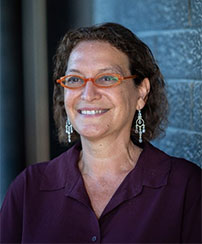Résumé
When a child has difficulties in reading –how can we help them and how should we teach them? The first step is understanding exactly what their problem is. Dyslexia is a general term for various deficits in reading. There are more than 20 different dyslexia types, each stemming from a deficit at a different component of the reading process or in the connections between these components. The different loci of impairment yield different error types.
I will describe the various types of dyslexia, focusing on the ones that are more frequent in French. For each dyslexia, I will describe the main characteristics: which kinds of errors do the children make in reading? Which types of words are most difficult for them? I will also discuss the way the unique properties of French interact with the manifestation of the different types of dyslexia. I will then describe directions for treatment for these dyslexias, and what a teacher can do to teach children with each kind of dyslexia in the most appropriate way.
I will finish with a further source of difficulties in reading comprehension that is not dyslexia: syntactic difficulties, and discuss ways to distinguish between the different sources of reading comprehension difficulties: reading difficulties and comprehension difficulties.

